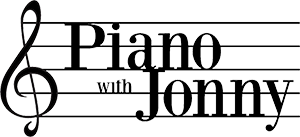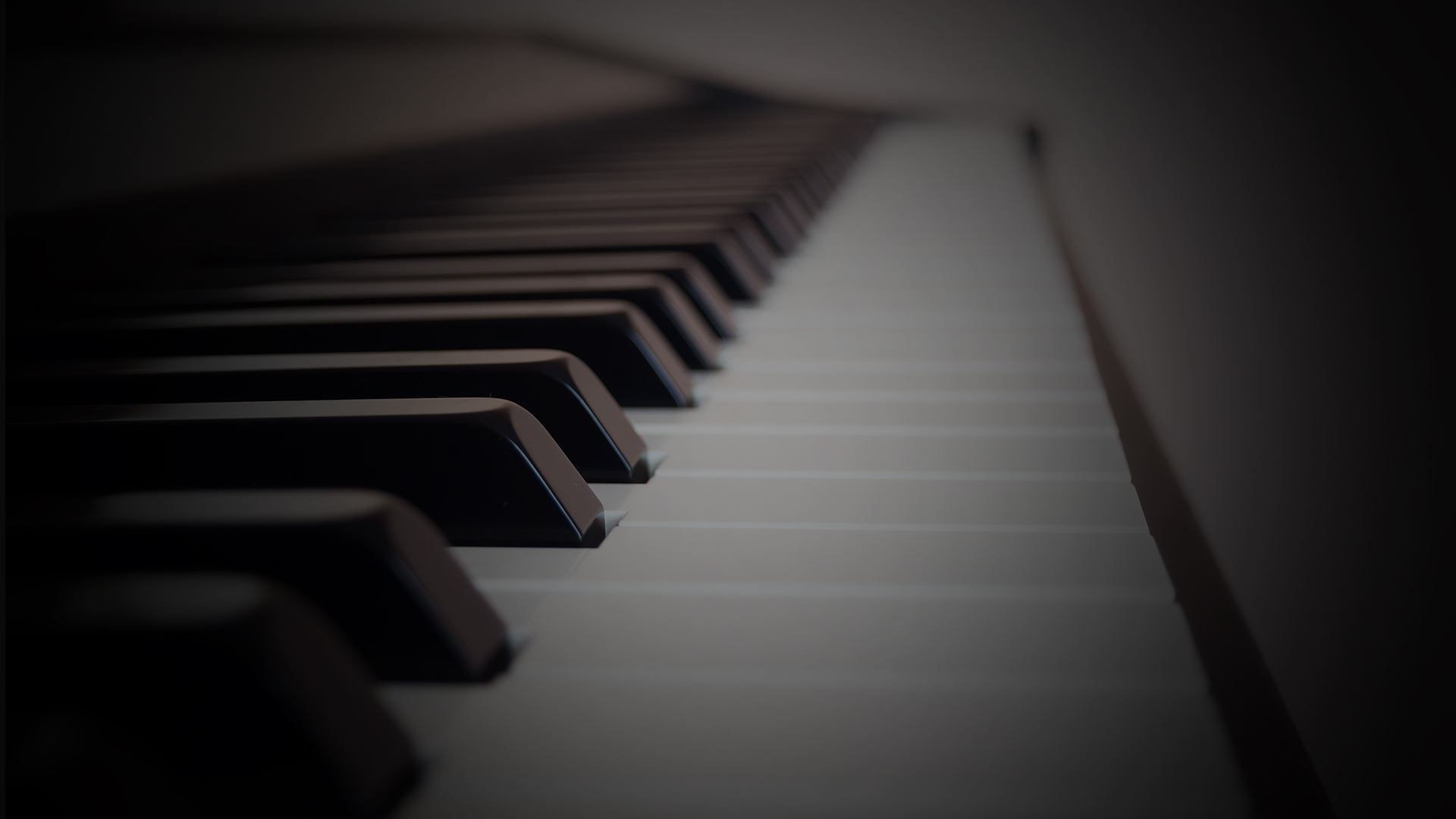The Ultimate Pop Piano Bass Line Technique
Learning Focus
Music Style
Free Lessons
Get free weekly lessons, practice tips, and downloadable resources to your inbox!
Are you tired of playing boring, repetitive-sounding left-hand bass lines on pop tunes? If so, then this lesson is for you. In today’s Quick Tip, The Ultimate Pop Piano Bass Line Technique, Jonny May shares his favorite ways to construct exciting pop piano bass lines that overcome monotony. You’ll learn:
Introduction
As a pianist, you might not direct a lot of mental energy toward thinking about pop bass lines. After all, that’s a bassist’s job, right? Moreover, it’s not like bassists sit around and discuss how to play pianistically on their instrument…or do they? (Spoiler alert: some do!)
The truth is, piano students can discover helpful insights and inspiration by giving thoughtful consideration to the role that an electric bass plays in a pop ensemble. That’s because when you play pop music on piano, you’re left hand is imitating an electric bass, whether you’ve thought about it or not. In fact, that begs the question another question…
What is the role of a bass line in pop music?
In pop music, the instrumental part that contains the lowest pitched frequencies is known as the bass line. Most often, a pop bass line is performed on an electric bass guitar or a bass synthesizer. The bass line plays an pivotal role in the overall impact of a pop song by supplying the following:
- Harmonic Foundation
- Stylistic Inflection
- Forward Momentum
Most listeners are well aware of the contribution that a bass line plays in anchoring the harmony of a pop song. However, for aspiring performers and songwriters, it’s important to give adequate attention to the other roles of an effective bass line mentioned above. For instance, pop music is heavily intertwined with dance. Therefore, an effective pop bass line aims beyond the harmonic perspective. Instead, it should seek to physically move the listener by means of catchy syncopations. In addition, pop bass lines often help propel a song forward by means of anticipations, ghost notes, slides and fills. For listening examples of these three elements, check out the following Spotify pop bass playlist.
As a pianist, understanding of the impact of a pop bass line can elevate of our own playing as well. This is particularly true in situations that don’t involve an actual bassist. Such contexts include performing cover arrangements of pop songs for solo piano and also in pop accompaniment settings.
Lesson Overview
In today’s featured piano tutorial, Jonny models various left-hand techniques for students of all playing levels using a chord progression modeled after the pop country single “Prayin’ for Daylight” by Rascal Flatts. The notation below shows the basic chord progression that we’ll explore throughout this lesson. In fact, if you’re already a PWJ member, then be sure to download the lesson sheet PDF from the bottom of this page after logging in with your membership. PWJ members can also easily change the key of these examples using our Smart Sheet Music.
Chord Progression
Beginning with the progression above, Jonny’s piano cover of “Prayin’ for Daylight” employs a syncopated “stock rhythm” in the left hand that is emblematic of the country pop style in general. In other words, Jonny’s aim in this lesson is not necessarily to transcribe Rascal Flatts’ bass line verbatim. Rather, his goal is to help the student learn how to use stylistic formulas to adapt pop songs for piano according to their own playing level.
The stylistic formula for today’s lesson centers on the stock rhythm shown below. Each of the accompaniment textures in the next section are arranged from this essential musical phrase.
Pop Bass Stock Rhythm

3 Pop Bass Lines Techniques for Piano
So far, we’ve examined a sample pop chord progression and a stock pop bass line. In this section, we’ll discover how students of all levels can play a pop piano accompaniment groove over this progression with a specific view toward an intentional bass line. You can use the following links to quickly navigate to a particular playing level.
Note, the videos in this section include a realtime view of the sustain pedal in the lower right-hand corner. That’s because many students often struggle to determine and apply an appropriate amount of pedaling. Even though pedaling is a subjective performance consideration, beginners are especially prone to pedaling extremes—either way too little or way too much. Thus, this feature allows students to visualize the amount of pedaling that they’re actually hearing in each demonstration, which should serve as a helpful guideline. For a deep dive on the topic of piano pedals, check out our full-length course on this topic:
🔎 Piano Pedal Essentials (Beg–Adv)
Alright, now let’s turn our attention to our first example.
Beginner Pop Bass Line
If you’re a beginner piano student, this pop accompaniment groove is for you. Notice that the bass line here closely follows the “stock rhythm for pop bass” modeled in the Lesson Overview section. However, there is one exception—octave displacement. Even though the left-hand is playing the root of each chord at all times, the octave displacement technique contributes a more pleasing contour.

While there are several possible ways to apply octave displacement, the example above represents one of the most common approaches, which is to play the root an octave higher on the backbeat (a term that refers to beats two and four in rock and pop music).
If you’d like to take your left-hand to the next level, then continue on to the intermediate example in the next section.
Intermediate Pop Bass Line
If you’re an intermediate pianist wanting to play pop bass lines with a more professional sound, then this level is for you. In this level, we’ll consider how to incorporate additional chord tones besides the root of each chord. That’s because the bass lines you hear on commercial recordings are typically not limited to roots alone. As long as you’re fairly comfortable repositioning your left-hand along the keyboard, you can play bass lines with more interesting contours.
The following intermediate bass line employs the same stock rhythm as our earlier examples. However, the notes are now arranged to outline triadic shapes, which provide a clearer indication of the chords’ qualities. For instance, the left hand in this example includes the root, 3rd and 5th of each chord. In addition, the right hand in this example now includes its own syncopation as well.

Are you feeling ambitious? If so, then let’s continue on to another example for advanced pianists.
Advanced Pop Bass Line
If you’re an aspiring pro pianist looking to play pop piano arrangements with an impressive professional flair, then this level is for you. The advanced pop accompaniment example below adds several additional left-hand techniques, including harmonic intervals and blocked triads. This example also include “set-up notes” or “falling 5ths,” which propel the harmony forward by introducing the 5th of each chord slightly before the chord arrives on a strong beat. Additionally, this example also introduces a touch of chromaticism to punctuate the phrasing as the pattern repeats.

Did you notice that the stock rhythm has been modified slightly in this example? That’s a good reminder that stylistic formulas should be interpreted as guidelines rather than “rules.” It’s also worth noting that the left-hand in this example has now evolved beyond a mere bass line. In fact, this left-hand pattern is actually quite similar the Harlem stride piano technique employed in early jazz music. Nevertheless, this example breaks from the early jazz tradition by employing additional 16th-note syncopations inspired by pop bass lines. The result is a powerful and impressive left-hand pop accompaniment pattern with a dense harmonic texture.
Conclusion
Congratulations, you’ve completed today’s lesson on The Ultimate Pop Piano Bass Line Technique. As a result, you’re now prepared to play pop piano grooves with more intentionality than ever!
If you enjoyed today’s lesson, then you’ll love the following PWJ resources:
Courses
- Pop & Contemporary Piano Accompaniment Patterns (Beg/Int, Int/Adv)
- Pop & Contemporary Piano Accompaniment: Popstinatos (Int/Adv)
- Pop Piano Accompaniment: The One Chord Wonder (Int)
- Two-Hand Coordination Exercises (Beg/Int, Int/Adv)
- Contemporary Progressions and Improv (Int, Adv)
- Pop Piano Improv Happy Monday (Int/Adv)
- Piano Chord Extensions (Int)
Quick Tips
- 10 Ways to Spice Up a Simple Piano Chord Progression (Int)
- Pop Piano Accompaniment: The Ultimate Guide (Beg/Int)
- The 11 Most Important Piano Chord Progressions (Beg/Int)
- 3 Steps to Play Piano Like Elton John (Int/Adv)
- The 7 Most Iconic Billy Joel Intros (Int)
- Top 5 Coldplay Piano Riffs (Beg/Int)
- 4 Exercises for Hand Coordination on Piano (Int/Adv)
Pop Piano Learning Tracks
Would you like to comment on this lesson?
Visit this Quick Tip on YouTube
 Writer
Writer
Michael LaDisa
Michael LaDisa graduated from the University of North Texas with a major in Music Theory & Composition. He lives in Chicago where he operates a private teaching studio and performs regularly as a solo pianist. His educational work with students has been featured on WGN-TV Evening News, Fox 32 Good Day,...
More Free Lessons
Want to learn how to serenade your soulmate with beautiful, romantic piano improvisation? Let your fingers do the talking with these 4 steps!
Struggling to play blues piano with skill and sensitivity? Master these blues piano left hand patterns to take your feel to the next level!
Explore the methods and mindset needed to comp on piano in the swing style with this complete guide to jazz piano comping for all levels.
Looking for downloads?
Subscribe to a membership plan for full access to this Quick Tip's sheet music and backing tracks!
Join Us
Get instant access to this Quick Tip and other member features with a PWJ membership!
Guided Learning Tracks
View guided learning tracks for all music styles and skill levels
Progress Tracking
Complete lessons and courses as you track your learning progress
Downloadable Resources
Download Sheet Music and Backing Tracks
Community Forums
Engage with other PWJ members in our member-only community forums
Become a better piano player today. Try us out completely free for 14 days!




